I’m still in a biography-reading phase - despite everything that’s being said on this blog about fiction as the truest expression of life and truth. Last week I finished reading Claire Tomalin’s book on Jane Austen - in French – though for some reason I don’t feel the language matters in factual writing. I like Tomalin’s technique at the start when writing pulls you in at once - like a novel - with its description of the icy weather and piled snow around the parsonage at Steventon on the December day of Jane’s birth. Astonishingly a (middle-class) woman who had given birth 1775 wouldn’t leave her bed or her room for a whole month – or even go out of the house for three months! What cossetting when you think of the three days at most that modern women spend in bed before getting back to running a home and other children without much unpaid help..and another surprise, the three month old newborn is then farmed out to a village wetnurse who looks after it day and night, freeing the mother to get on with her social life and the education of other children. What a contrast to our contemporary, guilt-bound delicacy of the mother-child bonding process kept up by constant bodily closeness - and maternal self- abnegation for at least the first three years of life.
Tomalin makes much of this different experience of childhood to explain Jane Austen’s hardiness later in her letters’ references to child mortality. The most famous is her comment on a young neighbour dead a few days after childbirth, “inexplicably according to the doctors – could it be that she caught sight of her husband-” a remark that shocked generations of commentators. The ‘braying of Harpies’ EM Forster is supposed to have said. The fact was, as Tomalin makes clear, that arranged marriage to ugly old widowers in exchange for social status or even livelihood was part of the harsh texture of eighteenth century life and why wouldn’t women be allowed to rail against it and say the truth to each other in private? The abandonment of the useless and the powerless was as normal as death by childbirth. One Austen brother, George, was simple-minded and left to grow up with the village wet-nurse rather than integrated into the family scene with his brothers and sisters by mournful, guilt-ridden parents. “Poor Animal!’ Jane Austen notes in a letter to her sister after a niece has died giving birth to her eleventh offspring. Flagellation and corporal punishment was a fact of life in the navy where the brothers trained as officers and hunting a way of country life for the bourgeoisie . Guilt in general did not seem to have the mental sway and neurosis-hatching power of Freud’s era a century later.
The constraints surrounding a well-born woman are also those of the biographers investigating Jane Austen’s life centuries later. A woman had so little public identity and like the theocratic societies we know of today the Austen sisters were totally dependent on their brothers’ timetables and whims to transport them from one place to another. When Jane was twenty-five and had written – but not published – first versions of three of the six novels, Sense and Sensibility, Northanger Abbey and Pride and Prejudice, her parents decided to give up the family home to her eldest brother and his family and move to temporary rooms in Bath. Tomalin points out that the result of this decision in which Jane had no say at all, was to stop her writing for more than ten years. It wasn’t until her mid-thirties when her wealthiest brother accorded her mother and sister a cottage at Chawton on one of his country estates that she was able to stop a life of incessant transition from country house to country house of various relatives and settle down in her own space and routine to write again, producing Emma and Mansfield Park and Persuasion. Austen’s letters of course – or what remains of those which her sister didn’t destroy, are all that a biographer has to base her work on, along with a few mostly conformist diaries and memoirs which give us a sense of the social round of balls, weddings, funerals. Cassandra, Jane’s sister also left us that big, dark-eyed enigmatic facial portrait that everyone knows, featuring a young, pinched –lipped woman with brown curls escaping from under a very eighteenth century bonnet.
The biography is very well-researched on family relationships and social connections so we get a rich idea of life around a bourgeois parsonage at the end of the eighteenth century. It feels a lot less gloom ridden than the Bronté’s life later in Yorkshire. There’s a lot of noise and horseplay for one because Jane Austen was the seventh child after five boys and a girl. The family home was also a country boarding school for boys. So contrary to the old maidish look of the famous portrait she grew up steeped in boys’ lives and activities. The young men around her were not academics but pragmatic hunters, naval officers, military careerists. Later in life she knew exactly what do when it came to looking after nephews who had lost their mother in childbirth or were running wild between governesses. Unlike other childless writers, eg Woolf, this was not a woman deprived of that human dimension of life with children but a woman with major hands-on experience of children’s needs, tantrums, dreams and games . All of which goes a long way to explain, I think, that rich understanding of human nature that we get in her writing about what is usually agreed to be a ‘very enclosed’ world. Jane Austen was the first to set up this idea in her own reference to working ‘with the finest of brushes’ on ‘two inches of ivory,’ but there is no doubt as to the broad, solid sanity of her vision. The novels are the production of a strong character enmeshed in social contact. The famous ‘inches of ivory’ quotation interestingly was to a nephew who had taken up novel writing. As soon as she began to have some success the nieces and nephews closest to her took to their pens and got her to read and critique their work. They must have admired her and turned thirstily to her for inspiration as among the cohorts of dress-making, birth-giving, tea-partying women around them. An point of note on the setting of the novels is that the Abbeys and Manors of Austen’s writing with their well-endowed heiresses have very little to do with the noisy parsonage where she grew up knowing she was not much of a financial catch for any local squire. Her subject range may have been ‘narrow’ in reference – but like today’s Hollywood family sagas the wealth of its setting was also her own enjoyable escapism from the material limits of her own life.
Why would I like my daughters to read this biography? One reason is Jane Austen’s life demonstrates the use and value of resilience in a milieu and time when lack of strength was deadly. Nor just brute strength but finesse of spirit that combats depression in the face of loss and disapppointment in love as is documented in the novels. What the biography gives us outside Austen’s fiction is evidence of a unique binary relationship between two sisters, the backbone of Jane Austen’s life and unwritten in the novels although from Sense and Sensibility onwards there are pairs and groups of sisters. Tomalin gives us from Austen’s letters, the strange domestic detail of the two sisters sleeping in the same room at night in the cottage at Chawton because Jane likes reading out loud at night to her sister as they both get undressed for bed. As a biographer Tomalin feels she has to point out to the modern reader that she doesn’t think this relationship is in any way sexual. Here is another reason I’d like my daughters to read this biography – to consider subtleties unhighlighted today with what we imagine to be our western/modern monopoly on freedom and pleasure. Or in other words the mystery of love in all its forms.
It’s Cassandra, Jane’s sister of course, whom all the biographers blame for destroying so much evidence that we end up ‘taking leave (of Jane) probably much as she would have liked, as an acquaintance rather than a close friend.’ Tomalin describes the relationship betwen the two sisters in moving detail at Jane Austen’s death. She has been ill from some undefined long illness for nearly two years, some sort of intestinal cancer for which the doctors have no prescription in the end but laudanam. Cassandra sits out the last days, motionlessly for six hours on the bed holding Jane’s head between her hands on a pillow placed on her knees after convulsions nearly throw her sister out of the bed,
‘She was the sun of my life,’ Cassandra writes more movingly to a niece after her sister’s death, ‘she who brightened and embellished all my joys and soothed my sorrows. I never hid the least thought from her and it’s as if I’ve lost a part of myself.’
Cassandra lives to be remembered by her great-nieces as an old woman wrapped in black silk with a big nose and a gentle smile. Her own end comes suddenly one day of a brainstorm when visiting a brother and naval Captain to say to goodbye to him and his family as they put on board ship for the Antilles. In the middle of the chaos of packing cases and departing relatives she collapses and no knows what to do with her. Certainly the ship cannot be put on hold or the Captain’s travel plans delayed. Everyone goes on their way and she is left in another brother’s house to finish dying. Some individuals, - a maiden aunt counted less than others of course but in general we get the feeling that individual counted little compared to today. What mattered was the fabric of society as a whole which each person represented to a greater or lesser degree.
However. Let’s end on a strangely alternative note - the last words of a French ‘witch’ Eleonore Galigai de Concini to her judges when condemned to die at the stake. She is quoted by Voltaire and by Austen in her last letter to a governess who had become a lifelong friend,
“My spell has been the power that stong souls must have over weak spirits.”
How on earth does Jane Austen end up quoting a 17th century sorceress? Tomalin talks a lot in the biography about the influence of a glamorous cousin Eliza who married into a French family, and lived a life of greater social and material freedom than any that the Austen sisters could ever have imagined. Unlike the ‘eventless’ life of the Austens, this Eliza is a biographer’s dream, frequenting French aristocracy, escaping the French revolution, choosing men for love not social survival. She would surely have read Voltaire and discussed his ideas with Jane who writes in this last letter, “Galigaî de Concinci forever!”
The six great novels of social comedy which survive today are but tips of the ice-berg. The gift of the biographer is to let us see some infinitely suggestive glimpse further below the surface.
Subscribe to:
Post Comments (Atom)

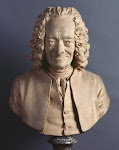





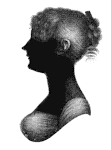

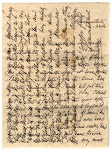

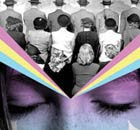
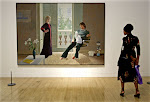


















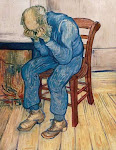



















No comments:
Post a Comment